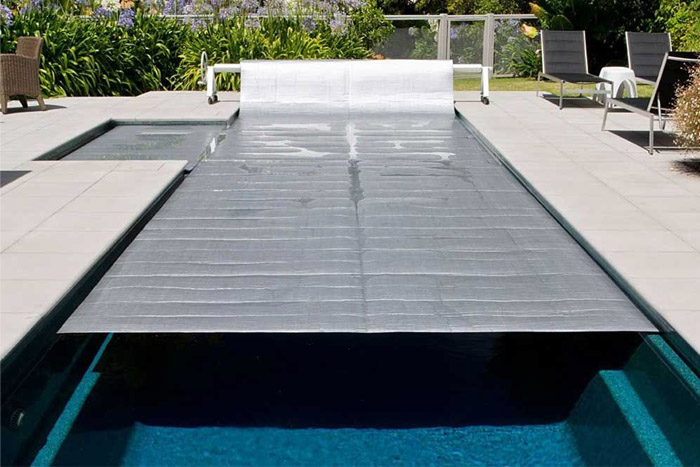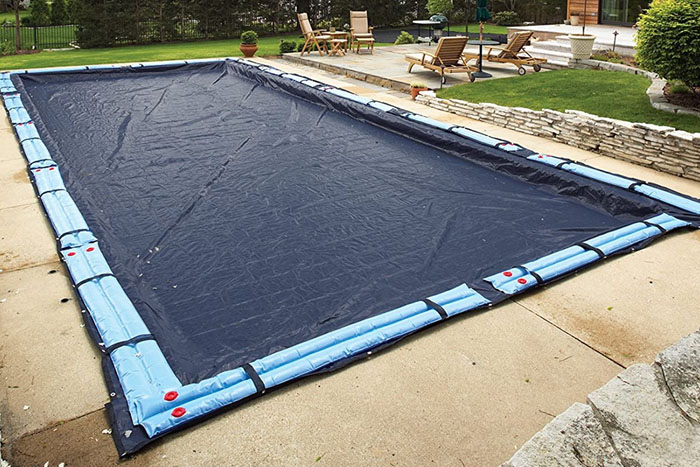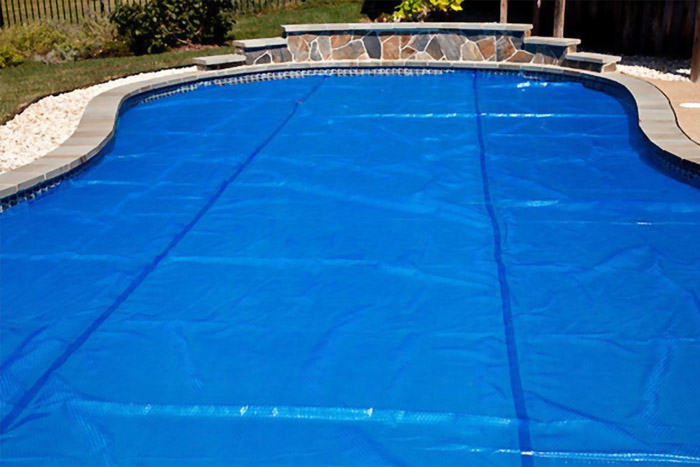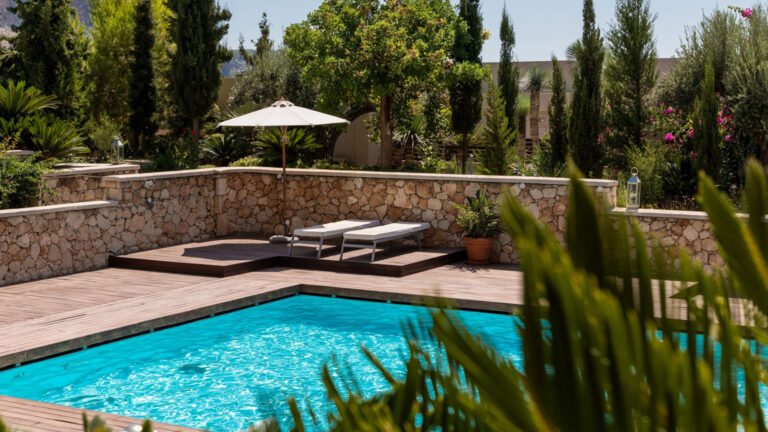Unless you’re one of those nutcases, ok, nutcase may be too harsh of a term, uh, very brave polar penguin people, who enjoy plunging into ice-cold water, you most likely would like to keep your swimming pool at a warm temperature.
Wait! Before you step out to burn a hole in your wallet with a gas or electric water heater, have you considered a sustainable alternative? Perhaps, a solar pool cover?
Well, if you haven’t, a solar swimming pool cover will increase the temperature of your swimming pool, whether it be an above ground or inground pool. With a solar cover, you greatly reduce gas and electric costs, minimize water expenditure, decrease the necessity of accessory chemicals and, most importantly, save the planet.
This is definitely worth taking into consideration.
What exactly is a Solar Pool Cover?

As a swimming pool owner, you more than likely own and utilize a safety pool cover of some sort. So, what would purchasing another type of cover do for you and your pool? Well, while your safety cover might keep your pool free of litter and soot, a solar pool cover actually heats the water.
Without a cover, pool water soaks up a significant quantity of natural sunlight. According to research, A plain white plaster concrete pool with a mean of 4.5 feet deep will absorb nearly 60% of the sun’s rays. This light will warm up the pool by nearly 0.7°F per hour during a typical sunny day.
This increase in heat is thwarted by evaporation, which depends on air and water temperature, and the speed of the wind that acts on the surface of the pool and humidity. Evaporation could cause the pool to lose nearly 4-7°F for every 1/4th inch of water lost through evaporation.
Solar pool covers trap energy emitted from sunrays and directs it in a beeline straight into your pool to heat it up. Where you live geographically will determine how warm the solar pool cover may keep the water.
It may not heat the water as efficiently as an electric or gas heater may do, but you will save cash in the long run by decreasing the amount of evaporation from the pool.
More Science: Pool Water Warming Edition
Remember doing calorimetry in your high school chemistry class? You know, the process of measuring the amount of heat released and absorbed during a chemical reaction? Me neither. Don’t worry; you’re just in time for a review.
Today class, we are going to be talking about the British Thermal Unit (BTU). It is defined as the amount of heat required to raise the temperature of one pound of water by one degree Fahrenheit. While it says British, it is actually used by the U.S. Energy Information Administration.

This is the quantity of energy equivalent to a single kindled match. That is right; all it takes is a single match to heat up a pound of water. Just don’t put the match directly in the water! So conclusively, this means that warming up a single pound of pool water by one degree takes one BTU.
For instance, if you theoretically maintain your swimming pool at a summery temperature of 80 degrees Fahrenheit, when just one pound of water is evaporated, it removes 1,048 BTUs of heat from the pool water.
In that instance, you now must find a way to compensate for the heat and water lost in the process. You didn’t just lose water and heat, but the proverbial hole in your wallet was burned. There’s only so much water a pool can lose to evaporation, but how much water exactly can your pool truly lose?
The answer to that question depends on where you reside geographically. In sunnier western states like Arizona or New Mexico, a typical uncovered pool is capable of losing anywhere from three to five feet of pool water every year due to evaporation.
A solar pool cover will assist you in preventing excessive heat loss and water in a couple of ways. Here’s how:
Solar Pool Covers Kill Two Birds with One Stone

Hopefully, after absorbing the information above, you now understand that the most essential factor in maintaining warm temperatures in the swimming pool is not dependent on the type of heater utilized or the high level you may keep your thermostat but rather maintaining the level of water in your pool.
Losing water is inevitable. It happens every time someone performs a cannonball, or it just simply evaporates. Either way, that is water that has to be replaced. Solar pool covers will achieve two goals at once.
Firstly, they will help conserve heat by nearly removing the chance of any evaporation completely. Solar pool covers are basically giant lids that are placed atop the water of the swimming pool, which ultimately halts evaporation.
Secondly, there are solar pool covers that are designed with a bubbled pattern. They function akin to a magnifying glass to intensify the warming tendencies of the sun. If you have ever placed a magnifying glass between a light and a piece of paper, it is the same concept.
Solar pool covers come in a variety of thicknesses. They are measured using a unit called mil. It is a metric calculated at one-thousandth of an inch (.001 of an inch). Color is a typical way to recognize the cover’s thickness.
Blue covers have 4 mil and 8 mil. Clear covers have 12 mil and 16 mil. The higher the mil, the more durable and sturdier the cover will be.






Gonna Buy a Solar Pool Cover?
Hopefully, you’ve made up your mind about whether you should purchase a solar pool cover. You love your property; you love your swimming pool, you love the environment, and most importantly, you love your family.
Show them how much you value your swimming pool and their enjoyment in it buy investing in a solar pool cover that will keep dirt and grime from the pool and maintain the warm temperature it should have.
Skip the gas or electric heater, and go shield your pool and keep it warm today!


